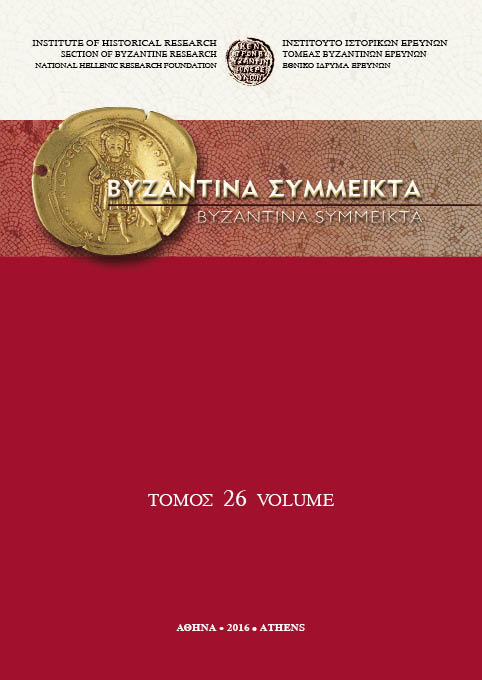Μυθικό παρελθόν-χριστιανικό παρόν: Πρόσληψη και προβολή των πνευματικών σχέσεων δύο βυζαντινών πόλεων. Το παράδειγμα της Θεσσαλονίκης και της Λάρισας (9ος-14ος αι.)
Abstract
Mythical Past-Christian Present: perception and fostering of Spiritual ties between two Byzantine cities. The case of Thessalonike and Larissa (9th-14th c.)
The cult of patron saints was not only relevant to the religious affiliation of the Byzantines but also influenced the individual political and cultural identity of each city, occasionally leading to a city claiming priority in time and supremacy over competing Byzantine cities. This does not seem to be the case of St. Demetrios and St. Achillios, patron saints of Thessalonike and Larissa respectively: saints, pilgrims, high ranking officials and scholars created a network of communication between the two Byzantine cities. After the sack of Thessalonike (the second most important city of the empire) by the Arabs in 904, the scholars of Larissa went on to question, through their hagiographical texts, The dominant position of Thessaloniki as a religious center in mainland Greece. On the other hand the literati in Thessaloniki, (who originated from Constantinople) and especially Eustathios, praised the administrative and military center of Thessaly not on its chistian symbol, Achillios, but rather because of the city's mythical past.
Article Details
- How to Cite
-
ΤΣΙΑΠΛΕΣ Γ. Β. (2016). Μυθικό παρελθόν-χριστιανικό παρόν: Πρόσληψη και προβολή των πνευματικών σχέσεων δύο βυζαντινών πόλεων. Το παράδειγμα της Θεσσαλονίκης και της Λάρισας (9ος-14ος αι.). Byzantina Symmeikta, 26(2), 67–92. https://doi.org/10.12681/byzsym.1199
- Issue
- BYZANTINA SYMMEIKTA 26
- Section
- Articles

This work is licensed under a Creative Commons Attribution-NonCommercial-ShareAlike 4.0 International License.
Copyright: The copyright for articles in this journal is retained by the author(s), with first publication rights granted to the journal. By virtue of their appearance in this open access journal, articles are free to use (with the exception of the non-granted right to make derivative works) with proper attribution for non-commercial uses (licence Creative Commons 4.0). NHRF retains the worldwide right to reproduce, display, distribute, and use articles published in BYZANTINA SYMMEIKTA in all formats and media, either separately or as part of collective works for the full term of copyright. This includes but is not limited to the right to publish articles in an issue of the Journal, copy and distribute individual reprints of the articles, authorize reproduction of articles in their entirety in another NHRF publication, and authorize reproduction and distribution of articles or abstracts thereof by means of computerized retrieval systems.



